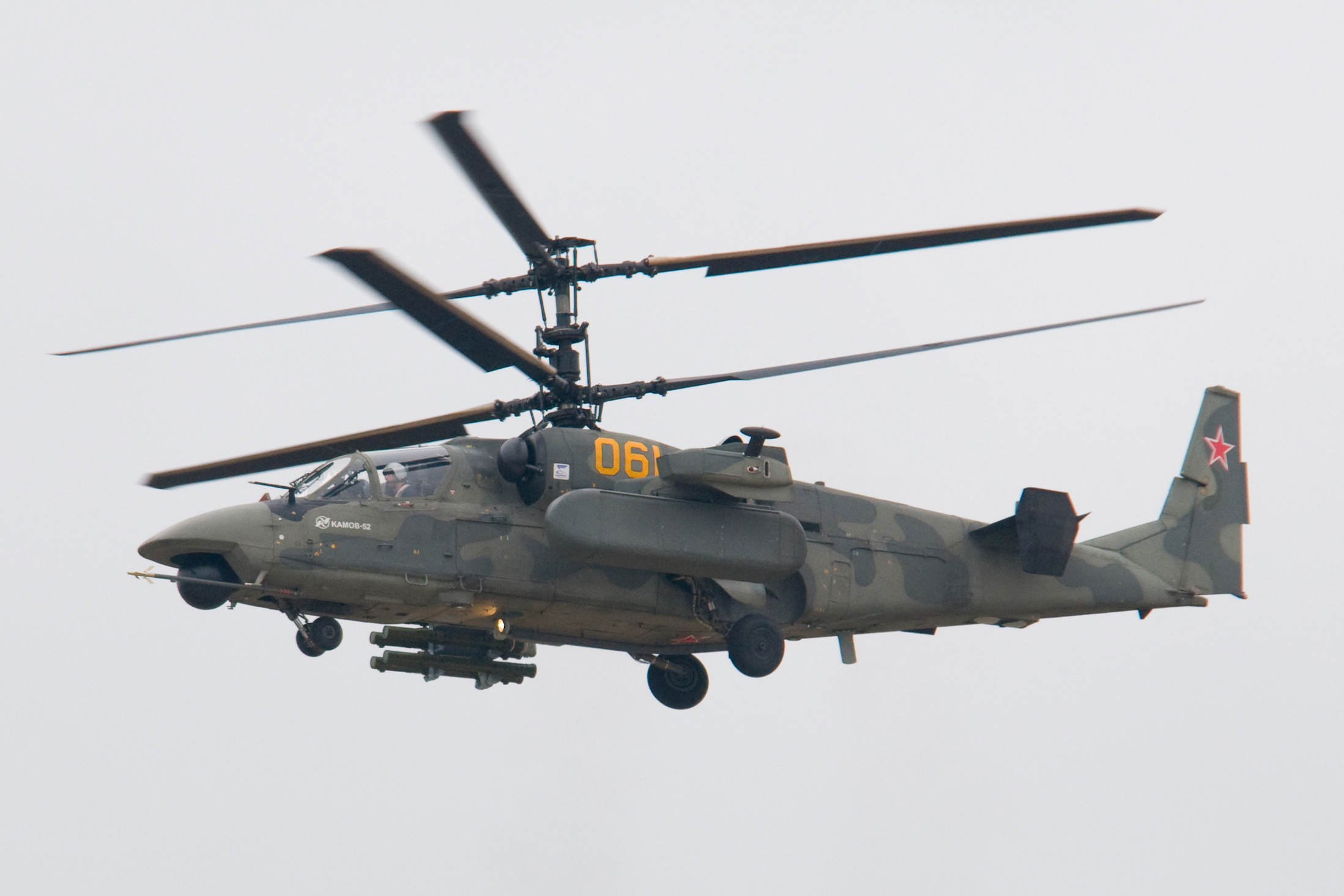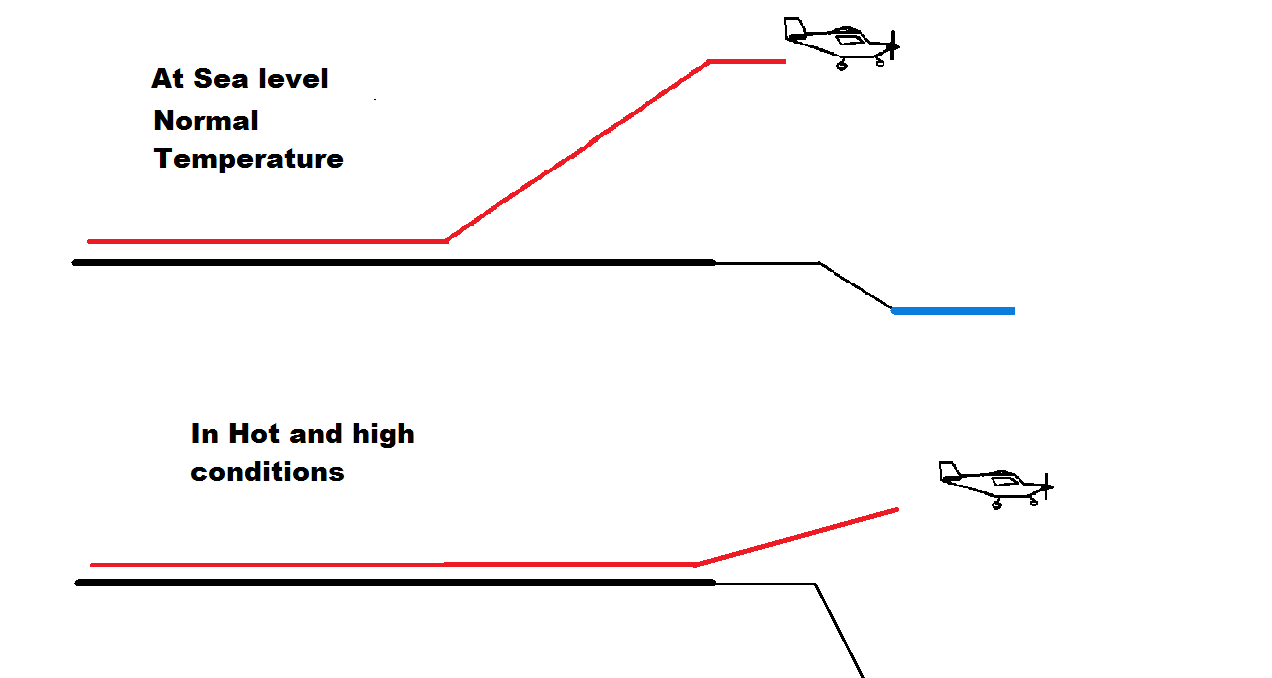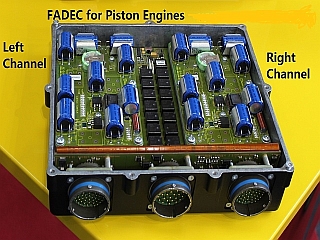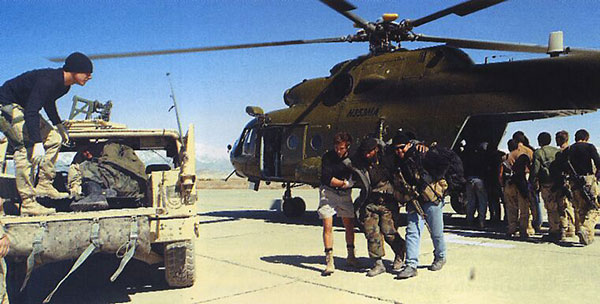|
Klimov VK-2500
The Klimov VK-2500 is a Russian turboshaft aero engine, a high power derivative of the TV3-117VMA engine, also for hot and high. Design It differs from the older versions in having an extended overhaul period of the engine hot components, extra gas-dynamic stability at varying duties, engine parameters accuracy and engine control quality, enhanced monitoring depth providing operation of the engine according to its technical condition and better weight characteristics and overall dimensions. Variants ;VK-2500-01 :Has a maximum continuous performance and a take-off performance. Powers Ka-52. ;VK-2500-02 :Has a maximum continuous performance and a take-off performance. Used by Ka-32, and Mi-35M, Mi-28N, Mi-28NE and Mi-28UB attack helicopters. ;VK-2500-03 :Has maximum continuous performance and a take-off performance. Used by Mi-8AMTSh-V/VA and Mi-171Sh transport helicopters. ;VK-2500P-01 :Equipped with revised FADEC. Rated at take-off power. Powers Mi-28NM. ;VK-2500M :Next ... [...More Info...] [...Related Items...] OR: [Wikipedia] [Google] [Baidu] |
Turboshaft
A turboshaft engine is a form of gas turbine that is optimized to produce shaftpower rather than jet thrust. In concept, turboshaft engines are very similar to turbojets, with additional turbine expansion to extract heat energy from the exhaust and convert it into output shaft power. They are even more similar to turboprops, with only minor differences, and a single engine is often sold in both forms. Turboshaft engines are commonly used in applications that require a sustained high power output, high reliability, small size, and light weight. These include helicopters, auxiliary power units, boats and ships, tanks, hovercraft, and stationary equipment. Overview A turboshaft engine may be made up of two major parts assemblies: the 'gas generator' and the 'power section'. The gas generator consists of the compressor, combustion chambers with ignitors and fuel nozzles, and one or more stages of turbine. The power section consists of additional stages of turbines, a gear reduction ... [...More Info...] [...Related Items...] OR: [Wikipedia] [Google] [Baidu] |
Klimov
The JSC Klimov (or Joint Stock Company Klimov) presently manufactures internationally certified gas turbine engines, main gearboxes and accessory drive gearboxes for transport aircraft. Originally established as ''Kirill Klimov Experimental Design Bureau'' in Saint-Petersburg under the direction of (Влади́мир Я́ковлевич Кли́мов) (1892–1962), Klimov designed engines for Soviet aircraft based on Renault aircraft engine designs. It may have used the designation Aircraft Repair Factory (aviazavod, ARZ) 117 during the Soviet period. History The Klimov OKB was formed in the early 1930s to produce and improve upon the liquid-cooled Hispano-Suiza 12Y V-12 piston engine for which the USSR had acquired a license. At that time Klimov also manufactured motorcycles. In 1946 the British government allowed Rolls-Royce to sell a number of Nene and Derwent V turbojet engines to the Soviet Union. Klimov OKB was given the task of "metrifying" the British designs, ... [...More Info...] [...Related Items...] OR: [Wikipedia] [Google] [Baidu] |
Kamov Ka-50
The Kamov Ka-50 "Black Shark" (russian: Чёрная акула, translit=Chyornaya akula, English: kitefin shark, NATO reporting name: Hokum A) is a Soviet/Russian single-seat attack helicopter with the distinctive coaxial rotor system of the Kamov design bureau. It was designed in the 1980s and adopted for service in the Russian army in 1995. It is manufactured by the Progress company in Arsenyev. It is used as a heavily armed scout helicopter. It has a rescue ejection system, rare for helicopters. During the late 1990s, Kamov and Israel Aerospace Industries developed a tandem-seat cockpit version, the Kamov Ka-50-2 "Erdogan" (russian: link=no, Эрдоган, tr, Erdoğan), to compete in Turkey's attack helicopter competition. Kamov also designed another two-seat variant, the Kamov Ka-52 "Alligator" (russian: link=no, Аллигатор, NATO reporting name: Hokum B). Development The Ka-50 is the production version of the V-80Sh-1 prototype. Production of the attack ... [...More Info...] [...Related Items...] OR: [Wikipedia] [Google] [Baidu] |
Kamov Ka-52
The Kamov Ka-50 "Black Shark" (russian: Чёрная акула, translit=Chyornaya akula, English: kitefin shark, NATO reporting name: Hokum A) is a Soviet/Russian single-seat attack helicopter with the distinctive coaxial rotor system of the Kamov design bureau. It was designed in the 1980s and adopted for service in the Russian army in 1995. It is manufactured by the Progress company in Arsenyev. It is used as a heavily armed scout helicopter. It has a rescue ejection system, rare for helicopters. During the late 1990s, Kamov and Israel Aerospace Industries developed a tandem-seat cockpit version, the Kamov Ka-50-2 "Erdogan" (russian: link=no, Эрдоган, tr, Erdoğan), to compete in Turkey's attack helicopter competition. Kamov also designed another two-seat variant, the Kamov Ka-52 "Alligator" (russian: link=no, Аллигатор, NATO reporting name: Hokum B). Development The Ka-50 is the production version of the V-80Sh-1 prototype. Production of the attack helic ... [...More Info...] [...Related Items...] OR: [Wikipedia] [Google] [Baidu] |
Mil Mi-28
The Mil Mi-28 (NATO reporting name "Havoc") is a Russian all-weather, day-night, military tandem, two-seat anti-armor attack helicopter. It is an attack helicopter with no intended secondary transport capability, better optimized than the Mil Mi-24 gunship for the role. It carries a single gun in an undernose barbette, plus external loads carried on pylons beneath stub wings. Development Origins In 1972, following the completion of the Mil Mi-24, development began on a unique attack helicopter with transport capability. The new design had a reduced transport capability (3 troops instead of 8) and omitted the cabin to provide better overall performance and higher top speed. Improved performance was important for its intended role fighting against tanks and enemy helicopters and covering helicopter landing operations. Initially, many different designs were considered, including an unconventional project with two main rotors, placed with engines on tips of wings (in perpendicular ... [...More Info...] [...Related Items...] OR: [Wikipedia] [Google] [Baidu] |
Turboshaft
A turboshaft engine is a form of gas turbine that is optimized to produce shaftpower rather than jet thrust. In concept, turboshaft engines are very similar to turbojets, with additional turbine expansion to extract heat energy from the exhaust and convert it into output shaft power. They are even more similar to turboprops, with only minor differences, and a single engine is often sold in both forms. Turboshaft engines are commonly used in applications that require a sustained high power output, high reliability, small size, and light weight. These include helicopters, auxiliary power units, boats and ships, tanks, hovercraft, and stationary equipment. Overview A turboshaft engine may be made up of two major parts assemblies: the 'gas generator' and the 'power section'. The gas generator consists of the compressor, combustion chambers with ignitors and fuel nozzles, and one or more stages of turbine. The power section consists of additional stages of turbines, a gear reduction ... [...More Info...] [...Related Items...] OR: [Wikipedia] [Google] [Baidu] |
Klimov TV3-117
The Klimov TV3-117 is a Russian gas turbine aero engine. It is used in most medium lift, utility, and attack helicopters designed by the Mil and Kamov design bureaus. The TV3-117 turboshaft engine was developed in 1974. Later the Klimov TV3-117 was installed on 95% of all helicopters designed by Mil and Kamov Engineering Centre. The engine has been produced in many variants. Variants ;TV3-117: for Mi-24A (1972) ;TV3-117M: ("M" stands for "marine") – for Mi-14 helicopters incorporates special features to be used at sea. Mass production started in 1976 ;TV3-117MT: ("MT" stands for "modernized, transport") – for Mi-8MT/Mi-17 helicopters and their variants. Mass production started in 1977 ;TV3-117KM: ("KM" stands for "Kamov, marine") – for Ka-27 helicopters ;TV3-117V: ("V" stands for "high altitude") – for Mi-24 helicopters operated in the mountains (particularly in Afghanistan). Mass production started in 1980 ;TV3-117VK: ("VK" stands for "high altitude, Kamov") – a mo ... [...More Info...] [...Related Items...] OR: [Wikipedia] [Google] [Baidu] |
Hot And High
In aviation, hot and high is a condition of low air density due to high ambient temperature and high airport elevation. Air density decreases with increasing temperature and altitude. The lower air density reduces the power output from the aircraft's engine and also requires a higher true airspeed before the aircraft can become airborne. Aviators gauge air density by calculating the density altitude. An airport may be especially hot ''or'' high, without the other condition being present. Temperature and pressure altitude can change from one hour to the next. The fact that temperature decreases as altitude increases mitigates the "hot and high" effect to a small extent. Negative effects of reduced engine power due to hot and high conditions * Airplanes require a longer takeoff run, potentially exceeding the amount of available runway. * Reduced take-off power hampers an aircraft's ability to climb. In some cases, an aircraft may be unable to climb rapidly enough to clear terrain ... [...More Info...] [...Related Items...] OR: [Wikipedia] [Google] [Baidu] |
Time Between Overhauls
Time between overhauls (abbreviated as TBO or TBOH) is the manufacturer's recommended number of running hours or calendar time before an aircraft engine or other component requires overhaul. On rotorcraft, many components have recommended or mandatory TBOs, including main rotor blades, tail rotor blades and gearboxes. For engines, the time between overhauls is generally a function of the complexity of the engine and how it is used. Piston-based engines are much more complex than turbine-powered engines, and generally have TBOs on the order of 1,200 to 2,000 hours of running time. They tend toward the lower number if they are new designs, or include boosting options such as a turbocharger. In comparison, jet engines and turboprop A turboprop is a turbine engine that drives an aircraft propeller. A turboprop consists of an intake, reduction gearbox, compressor, combustor, turbine, and a propelling nozzle. Air enters the intake and is compressed by the compressor. Fuel ... ... [...More Info...] [...Related Items...] OR: [Wikipedia] [Google] [Baidu] |
FADEC
A full authority digital engine (or electronics) control (FADEC) is a system consisting of a digital computer, called an "electronic engine controller" (EEC) or "engine control unit" (ECU), and its related accessories that control all aspects of aircraft engine performance. FADECs have been produced for both piston engines and jet engines. History The goal of any engine control system is to allow the engine to perform at maximum efficiency for a given condition. Originally, engine control systems consisted of simple mechanical linkages connected physically to the engine. By moving these levers the pilot or the flight engineer could control fuel flow, power output, and many other engine parameters. The mechanical/hydraulic engine control unit for Germany's BMW 801 piston aviation radial engine of World War II was just one notable example of this in its later stages of development. This mechanical engine control was progressively replaced first by analog electronic engine control ... [...More Info...] [...Related Items...] OR: [Wikipedia] [Google] [Baidu] |
TV3-117
The Klimov TV3-117 is a Russian gas turbine aero engine. It is used in most medium lift, utility, and attack helicopters designed by the Mil and Kamov design bureaus. The TV3-117 turboshaft engine was developed in 1974. Later the Klimov TV3-117 was installed on 95% of all helicopters designed by Mil and Kamov Engineering Centre. The engine has been produced in many variants. Variants ;TV3-117: for Mi-24A (1972) ;TV3-117M: ("M" stands for "marine") – for Mi-14 helicopters incorporates special features to be used at sea. Mass production started in 1976 ;TV3-117MT: ("MT" stands for "modernized, transport") – for Mi-8MT/Mi-17 helicopters and their variants. Mass production started in 1977 ;TV3-117KM: ("KM" stands for "Kamov, marine") – for Ka-27 helicopters ;TV3-117V: ("V" stands for "high altitude") – for Mi-24 helicopters operated in the mountains (particularly in Afghanistan). Mass production started in 1980 ;TV3-117VK: ("VK" stands for "high altitude, Kamov") – a mo ... [...More Info...] [...Related Items...] OR: [Wikipedia] [Google] [Baidu] |
Mil Mi-17
The Mil Mi-17 ( NATO reporting name: Hip) is a Soviet-designed Russian military helicopter family introduced in 1975 (Mi-8M), continuing in production at two factories, in Kazan and Ulan-Ude. It is known as the Mi-8M series in Russian service. The helicopter is mostly used as a medium twin-turbine transport helicopter, as well as an armed gunship version. Development Developed from the basic Mi-8 airframe, the Mi-17 was fitted with the larger Klimov TV3-117MT engines, rotors, and transmission developed for the Mi-14, along with fuselage improvements for heavier loads. Optional engines for "hot and high" conditions are the 1545 kW (2070 shp) Isotov TV3-117VM. Recent exports to China and Venezuela for use in high mountains have the new Klimov VK-2500 version of the Klimov TV3-117 engine with FADEC control. The designation Mi-17 is for export; Russian armed forces call it Mi-8MT. The Mi-17 can be recognized because it has the tail rotor on the port side instead of the s ... [...More Info...] [...Related Items...] OR: [Wikipedia] [Google] [Baidu] |


.jpg)


